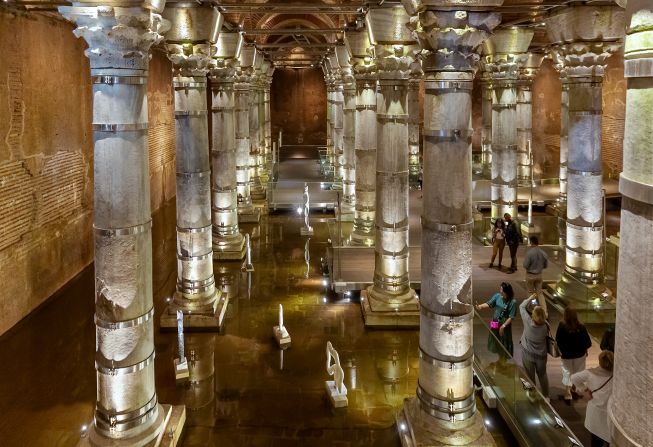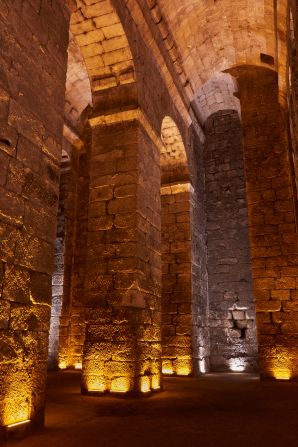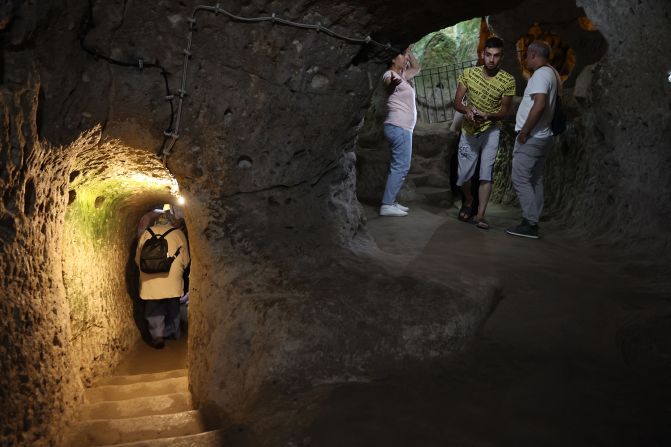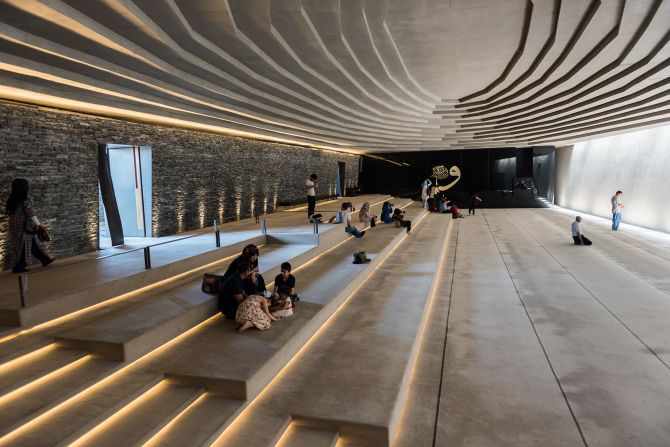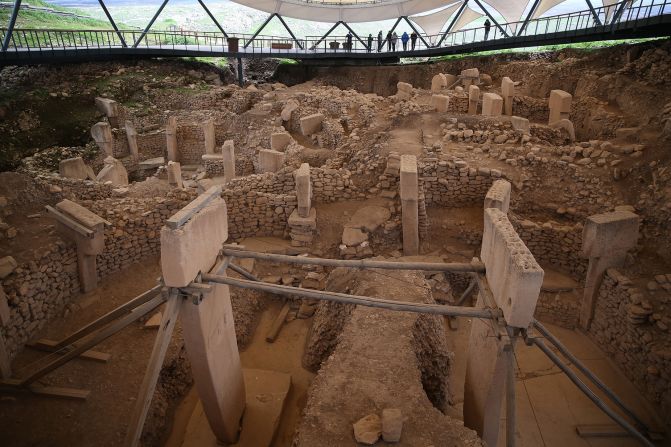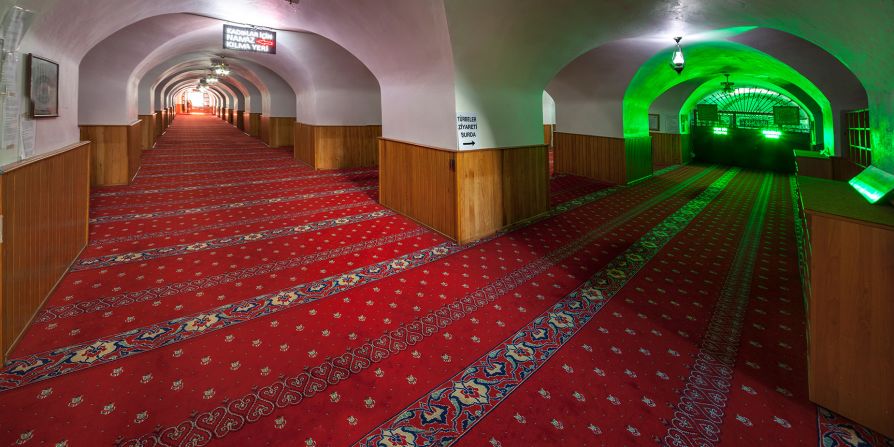Editor’s Note: This CNN Travel series is, or was, sponsored by the country it highlights. CNN retains full editorial control over subject matter, reporting and frequency of the articles and videos within the sponsorship, in compliance with our policy.
Turkey is rich with ancient wonders. Straddling Europe and Asia, the country has been at the heart of numerous empires, which have left behind archaeological attractions to rival its many natural wonders.
But not everything sits above ground, basking in Turkish sunshine.
Less obviously visible but equally impressive are the historical treasures, some more than 12,000 years old, that can be found underground.
Some are well known. Istanbul’s Basilica Cistern, a columned reservoir that dates back to Roman times, has been open to tourists for decades and featured in movies including the James Bond classic “From Russia with Love.”
Others may not be as famous, but are no less spectacular or fascinating.
Here are some of the best subterranean marvels that the country has to offer:
Şerefiye Underground Cistern (Theodosius Cistern), Faith, Istanbul
Like the Basilica, this elegant cistern was built during late Roman times to ensure a supply of water to Constantinople, as Istanbul was once known.
Unlike the Basilica, this underground chamber was completely forgotten about until less than 15 years ago.
The Şerefiye Cistern, was constructed during the reign of Theodosius II, ruler of the Eastern Roman - or Byzantine - Empire from 402 to 450 CE in what is now Istanbul’s Fatih district.
It was constructed to store fresh water brought from Belgrade Forest, a wilderness near the Black Sea north of the city, via a 155-mile-long canal network that included the ancient Aqueduct of Valens, which still stands in Fatih. The water was then distributed to citizens.
At 82 by 147 feet (25 by 45 meters), with a ceiling almost 36 feet high, walls eight feet thick and 32 marble columns, the structure – also known as the Theodosius Cistern – is as substantial as it is beautiful.
Yet sometime around the late 18th or early 19th century its existence was completely forgotten after a large private estate was built on the site, and it lay hidden for many years.
The Istanbul municipality took over the buildings in the early 20th century, but it was only in 2010 when some unloved additions were demolished that the cistern’s underground entryway was rediscovered.
The 1,600-year-old water depot opened to the public in 2018. Inside, the columns topped with Corinthian capitals shimmer with a brilliant gleam, the highly polished brass rings reflecting the color and movement of installations and cultural events.
Entering this cistern, the thick walls provide a cocoon from the outside world. The cacophony of the street above is replaced by the sounds of rippling water.
Dara cisterns, Mardin
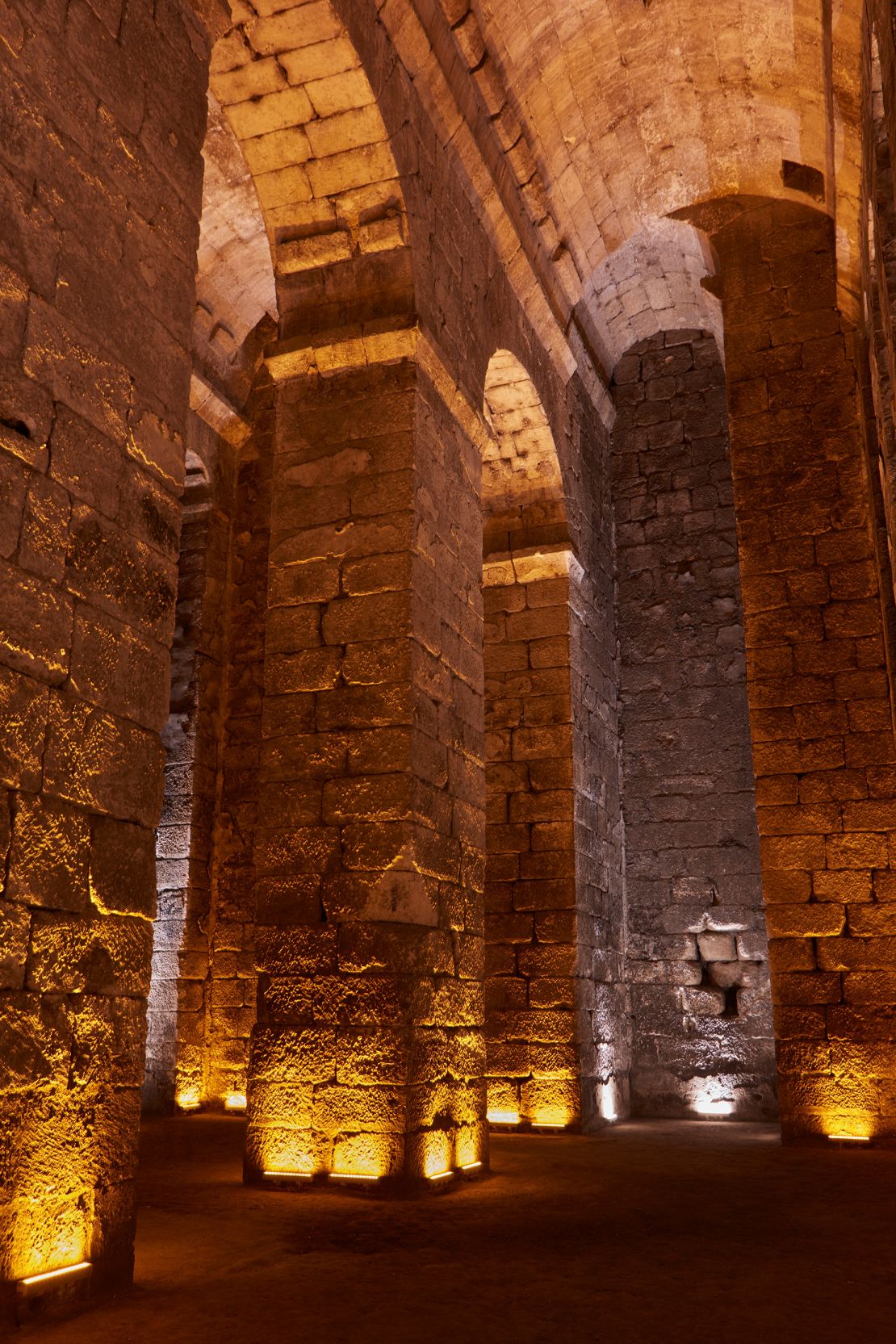
When archaeological excavations began at Dara in 1986, it was a small settlement on a green, windswept plain about 19 miles (30 kilometers) outside the historic city of Mardin in southeast Turkey.
Other than locals herding their livestock through the ruins of a garrison city dating to the 6th century, few people went there.
Now, the site has given up numerous treasures including rock-cut tombs, an olive processing workshop and a series of underground cisterns.
One of them is so large that locals believed it was a zindan, a dungeon. They told fanciful tales of prisoners chained up for years, dependent on weak shafts of sunlight to calculate the passage of time.
In reality the cisterns stored water flowing down from the mountains for use by the locals and Roman soldiers stationed in Dara.
Derinkuyu, Nevşehir, Cappadocia
Back in 1963 a Turkish farmer noticed his chickens kept going missing then reappeared as if by magic. Eager to solve the mystery he followed their tracks to a crack in the tufa, the volcanic rock that also forms Cappadocia’s peribaca fairy chimneys, and found the opening to an 18-story-deep cave system.
Derinkuyu, “the deep well” as it translates in English, was inscribed on the UNESCO World Heritage List in 1985. It once provided safe haven for up to 20,000 people. Now tourists can take the same steps used by Christians fleeing Arab raiders hundreds of years ago.
Fresh air enters via deep air shafts, but despite this the atmosphere in Derinkuyu is close and becomes more humid as the route descends 328 feet (100 meters.)
In places the path ducks under low-hanging rock and twists back on itself. Fragments of conversation echo off the walls while the murky figures of other cave explorers appear in the distance.
Traversing the eight floors open to the public, filled with the remains of churches, stables, wine presses and empty grave sites, history merges with the present.
Rümeli Han Tunnel, Taksim, Istanbul
The elegant structures lining Istanbul’s popular pedestrian thoroughfare Istiklal Caddesi once housed corset-makers, carpet dealers and private clubs frequented by émigrés who had fled revolutionary Russia.
In ornate buildings like Rümeli Han, the who’s who of Istanbul came to dine and artists, actors and singers took center stage. Whether they used the mysterious tunnels, which lay undiscovered beneath it for years, only coming to light in 2017, is anyone’s guess.
Rümeli Han was built in 1894 for Sarıcazade Ragıp Pasha, Sultan Abdülhamid II’s head steward. Renovation work on the building began just over five years ago, at which point its subterranean secrets were revealed.
The tunnel is now open to the public, a rather mundane sign taped to the building’s elegant marble facade announces its presence.
Down inside, tightly laid ochre-colored clay bricks block out the world above. Set at regular intervals along the walls, windowless rooms lead one into the other, ending at stairwells, now locked, that go back up to street level.
No one’s exactly sure of the purpose of the tunnels. Perhaps the elite used this underground pathway to move unseen from one assignation to another.
Sancaklar Mosque, Büyükçekmece, Istanbul
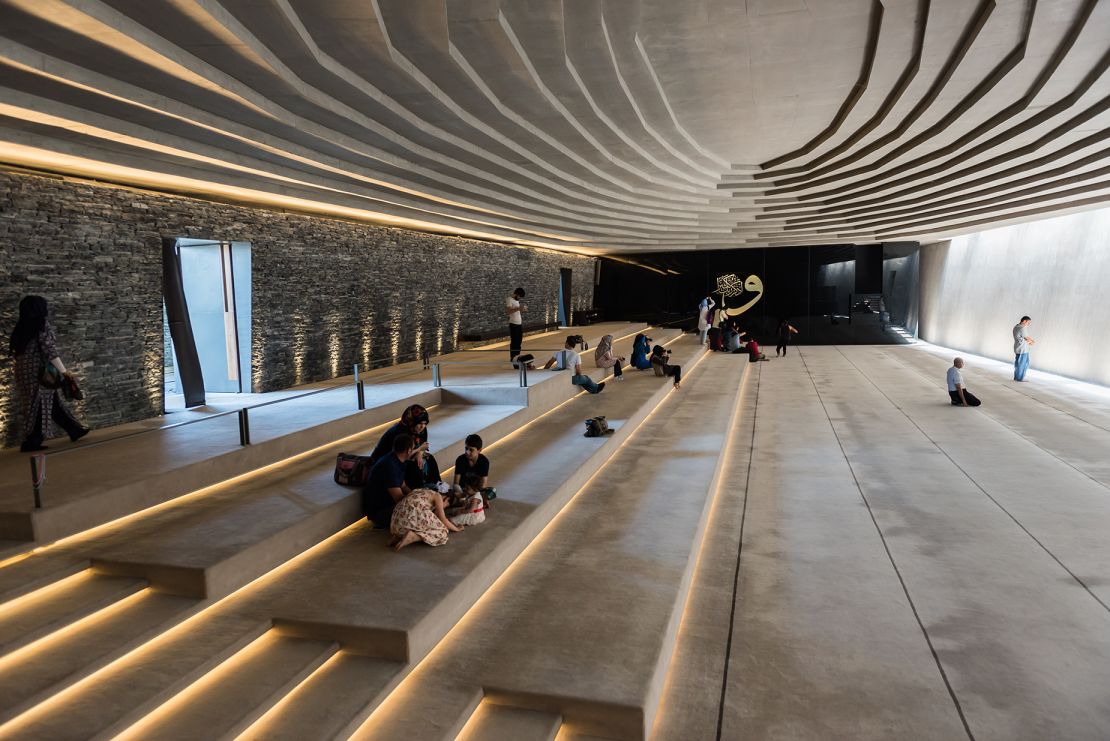
From a distance, solid grey dry stone walls and a rectangular tower, the minaret, are all that is visible of the post-modern Sancaklar Mosque, located in a remote suburb on the outskirts of Istanbul.
But underneath is something that looks like it’s from another world entirely.
Outside, the building is as much rooted in the past as the future. Scant vegetation ripples in the breeze and in the distance utilitarian apartment blocks march along the horizon. The dry stone suggests the boundaries of a farm while a surface pattern of parallel lines radiating down a gentle slope is reminiscent of ancient archaeological sites.
The interior, however, is a calm, womb-like space. The only decoration is rough-hewn masonry and slabs of reinforced concrete.
It’s an unusual but beautiful space. Every seat on the arcs of the building’s amphitheater has a clear line of sight to the mihrab, the part of the mosque that indicates the direction of Mecca. Here, rather than a traditional elaborately carved wall niche, the mirhab takes the form of a single beam of light.
Unlike conventional designs, Sancaklar has no main dome, or any dome at all. Overhead, a tranquil sweep of smooth concrete lines in the style of a Zen garden reinforces the sense of peace.
Sancaklar Mosque is both impressive and formidable. Completed in 2012, it’s the architectural realization of the constant tension of the manmade and the natural, and our place in between.
Göbeklitepe, Şanlıurfa
A space-age dome located not far outside Şanlıurfa in southeastern Turkey strikes a discordant note in the natural tapestry blooming on the rolling hills surrounding it. Archaeologically speaking, what it protects is even more disconcerting.
Inside the dome, visitors gaze down at huge stone stele – T-shaped columns weighing around five tonnes each, with carvings of wild animals on the sides.
They date to the pre-Pottery Neolithic Age. That’s around 9600-8200 BCE. In 2018, UNESCO recognized Göbeklitepe as the first manifestation of human-made monumental architecture in history. In comparison, Stonehenge, everyone’s must-see megalithic structure from 3000-2500 BCE, seems positively juvenile.
Age aside, the discovery of this place of worship in 1994 turned archaeology on its head. Experts believe the T-shaped pillars were erected by hunter-gatherers for use as a place of worship, a practice previously only associated with settled agricultural communities.
Looking at them in situ, it’s hard to picture anyone, human or otherwise, moving these enormous stones into place.
To better understand physically what creating Göbeklitepe entailed and to experience its scale and majesty from the ground up, it’s worth taking a wander through the full-scale replica in the Şanlıurfa Archaeology Museum.
Yeraltı Camii, Karaköy, Istanbul
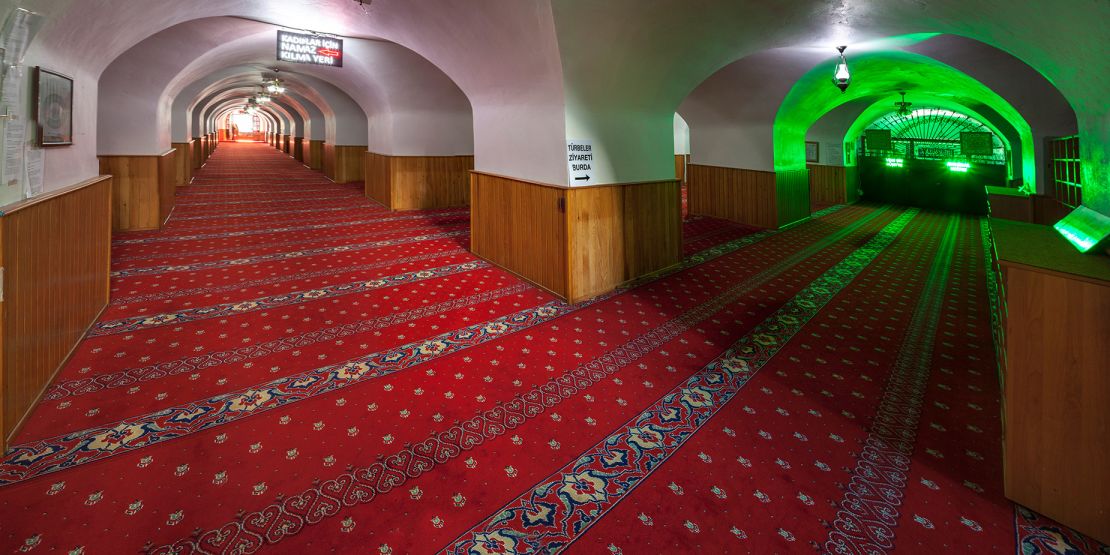
Squeezed between buildings near the mouth of the Golden Horn, Yeraltı Mosque on a small street in Karaköy, Istanbul, is easy to overlook. An unassuming door opens into a simple interior design based on repetition and clean lines.
Here, 42 squat piers run in parallel rows. Even on the warmest days the interior remains cool due to seven-foot-thick walls and the cold seeping up through the red carpet.
An eerie green glow emanates from the far end, but other than that, at first glance this mosque doesn’t seem to offer much in the way of interest.
Looks can be deceiving.
Yeraltı, literally meaning underground, was originally a dungeon in the basement of a fort built by the Byzantines in the 8th century CE.
It was also the northern anchor point for an enormous chain stretched across to Istanbul’s ancient Topkapı Palace – once the seat of power for the Ottoman Empire – on the other side of the waterway aimed at stopping Turkish ships from entering and attacking the city. Like many a best-laid plan, it failed, allowing Fatih Sultan Mehmet to conquer the city in 1453.
In the following centuries, the fort was damaged, remodelled, repurposed and finally converted into a mosque by Grand Vizier Bahir Mustafa Paşa in 1757.
And that weird glow? In 1640, a Nakşibendi dervish dreamt the bodies of two Arab soldiers thought to have participated in the failed siege of Constantinople in the 7th century were buried here.
During the month of Ramadan it’s traditional for people to come and pray at their tombs, illuminated by bright neon, giving this usually quiet mosque an incongruously festive air.
Lisa Morrow is a freelance writer and sociologist living in Istanbul, Turkey. Her writing has been published in The New York Times, Guardian UK, BBC Travel, World Nomads, Fodors and Hyperallergic. She’s also the author of five books, the latest being “Istanbul 50 Unsung Places, an alternative guide to the city.”
